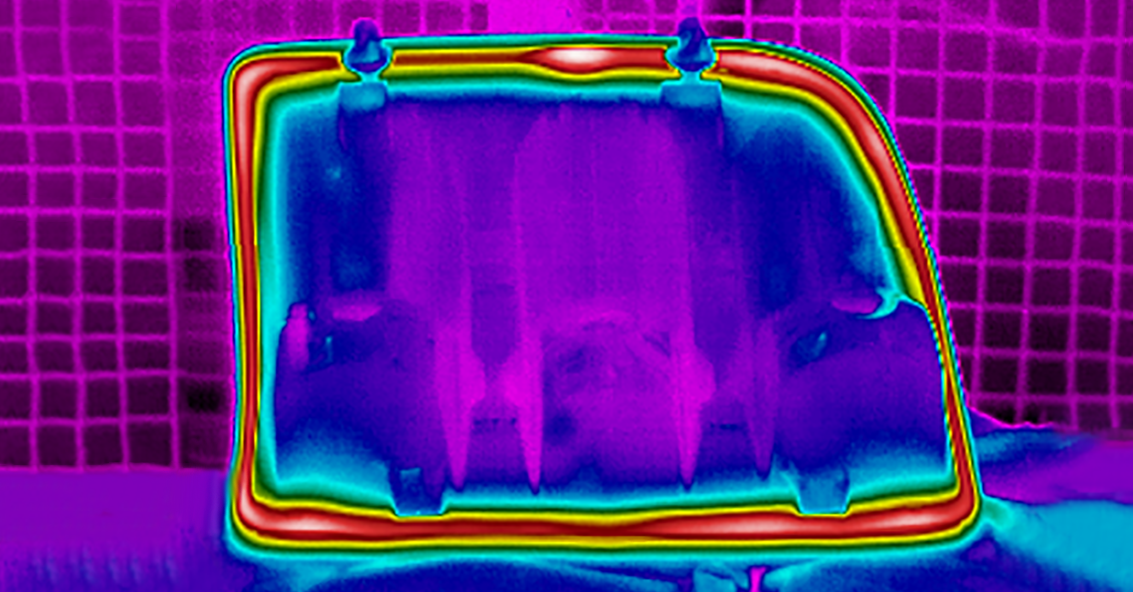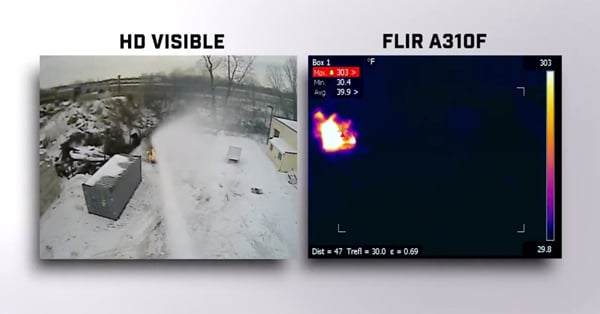Application Spotlight: Quality and Process Control- Thermal Pattern Recognition

The Customer's Challenge
As assembly processes become more automated and operate at higher speeds, so too should quality assurance processes. The goal of quality assurance should be to find problems and then solve them quickly and efficiently to prevent bottlenecking, downtime, and/or faulty packaging or products from leaving the facility. An investment in better quality assurance can save an organization precious time and money.
CONTINUE READING BELOW OR DOWNLOAD THE PDF
THE SOLUTION
Temperature differences of 1°C/1.8°F or more are often used to determine pass/fail criteria for everything from packaging and sealing to food production, die casting, and a variety of other applications. Infrared imaging can repeatably and accurately illustrate thermal patterns and gradients used to identify these flaws in production processes. Thermal imaging can show an incomplete shape, non-uniform temperature profile, or varying gradients. Thermal data analytics assist in finding and correcting errors in the production equipment, thereby helping to prevent the output of defective products. Infrared solutions use the same type of algorithms for edge detection, blob analysis, and pattern recognition as vision systems, so automation solutions specializing in quality assurance and control processes represent the future of infrared in industry.

Left to right: paper manufacturing, automotive applications, circuit board validation
THE TECHNOLOGY
FLIR offers a range of fixed-mount thermal imaging solutions to stream temperature linear data or radiometric data through communication protocols such as GigE Vision and RTSP. The infrared camera works with a variety of software to interpret images, including Cognex Designer Pro, NI Software, Pleora Ebus, Teledyne, and Spinaker SDK. Uncompromised data is repeatably and reliably generated from thermal detector arrays in either 320 × 240 or 640 × 480 options offering up to ±2°C (±3.6°F) accuracy within temperature ranges of -40°C to 2000°C (-40°F to 3632°F). FLIR thermal cameras can be tailored to your application: select manual or automatic focus or change the lens when the field of view needs to be modified. Thanks to its unique compressed radiometric output, these cameras avoid overburdening processors. They also add value to your system by pairing a built-in visual camera and LEDs in partnership with the infrared camera.

Left to right: FLIR A700™ Thermal Image Streaming Camera, FLIR A615™ Thermal Machine Vision Camera, FLIR A65™ IR Temperature Sensor
For more information about condition monitoring, please visit: FLIR.com/instruments/condition-monitoring/


